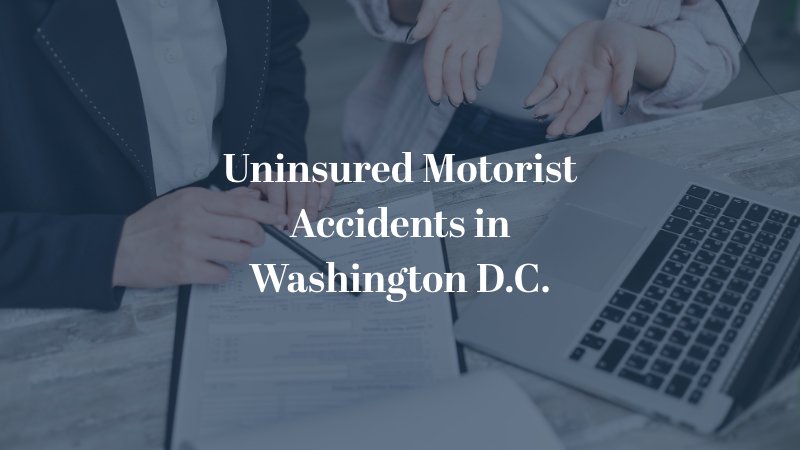Uninsured motorist (UM) coverage is a kind of insurance that protects you if you’re in a crash with a driver who doesn’t have any car insurance. In Washington D.C., having UM coverage is especially important because not every driver on the road follows the law or carries the insurance they’re supposed to. Even a careful driver can be hit by someone who can’t pay for your injuries or car repairs.
When Can You File an Uninsured Motorist Claim?
Uninsured motorist coverage is there to help when you’re hurt by someone who doesn’t have the right coverage. Here’s when you might need to file this kind of claim:
When Another Driver Has No Insurance
If you’re in an accident and find out the other driver has no insurance at all, your UM coverage can help pay for your injuries, car repairs, and other losses. This keeps you from bearing the financial burden for someone else’s mistake.
Hit-and-Run Accidents
If you’re the victim of a hit-and-run, and the other driver is never identified, you can use your UM policy. Since you can’t hold the at-fault driver accountable, your insurance steps in to cover your costs.
Accidents With Underinsured Drivers
Sometimes the person who hits you has insurance, but the limits are too low to cover the full cost of your injuries or damage. In these cases, uninsured/underinsured motorist coverage can fill the gap and help with expenses the other person’s policy can’t pay for.
Uninsured Motorist Coverage is Required in Washington, D.C.
In Washington D.C., drivers are required by law to have uninsured motorist coverage as part of their car insurance policy. The minimum coverage for bodily injury is $25,000 for each person injured and $50,000 total for the entire accident, no matter how many people are hurt. For property damage, there must be at least $5,000 in coverage.

How Does the UM Claim Process Work in Washington, D.C.?
Filing an uninsured motorist claim in Washington, D.C. takes several steps. Below is an overview.
- Report the Accident to Your Insurance Company: Contact your insurance provider as soon as possible after the collision. Give them all the information you have, especially noting that the other driver had no insurance or couldn’t be identified.
- Collect and Preserve Evidence: Save everything from the accident – photos, medical records, police reports, and the contact details of any witnesses. This evidence is important in proving what happened and showing that you deserve compensation under your policy.
- Medical Treatment and Documentation: See a doctor right away, no matter how minor your injuries may seem. Keep all bills, exam notes, and follow-up instructions. Medical documentation will be the backbone of your claim for things like medical expenses, lost wages, and pain and suffering.
- Insurance Investigation and Evaluation: Your insurance company will review all documents and may ask for more information or statements. If they question your claim or offer less than you need, this is your chance to present more evidence or appeal their findings.
- Negotiation and Settlement: It’s likely that your insurer’s first offer will not cover everything. You have the right to negotiate, and having a car accident lawyer can often improve your results, as they’ll know what’s fair and how to push back against low offers.
- Litigation (If Necessary): If negotiations break down or your claim is denied, your next step may be to sue. A personal injury attorney will guide you through filing a lawsuit and building your case so you can pursue the compensation you need in court.
Taking the right steps in the UM claim process gives you a better shot at fair compensation and a smoother road to recovery after your accident. If you have any questions, we’re always here to help. Contact us today to schedule a free consultation.